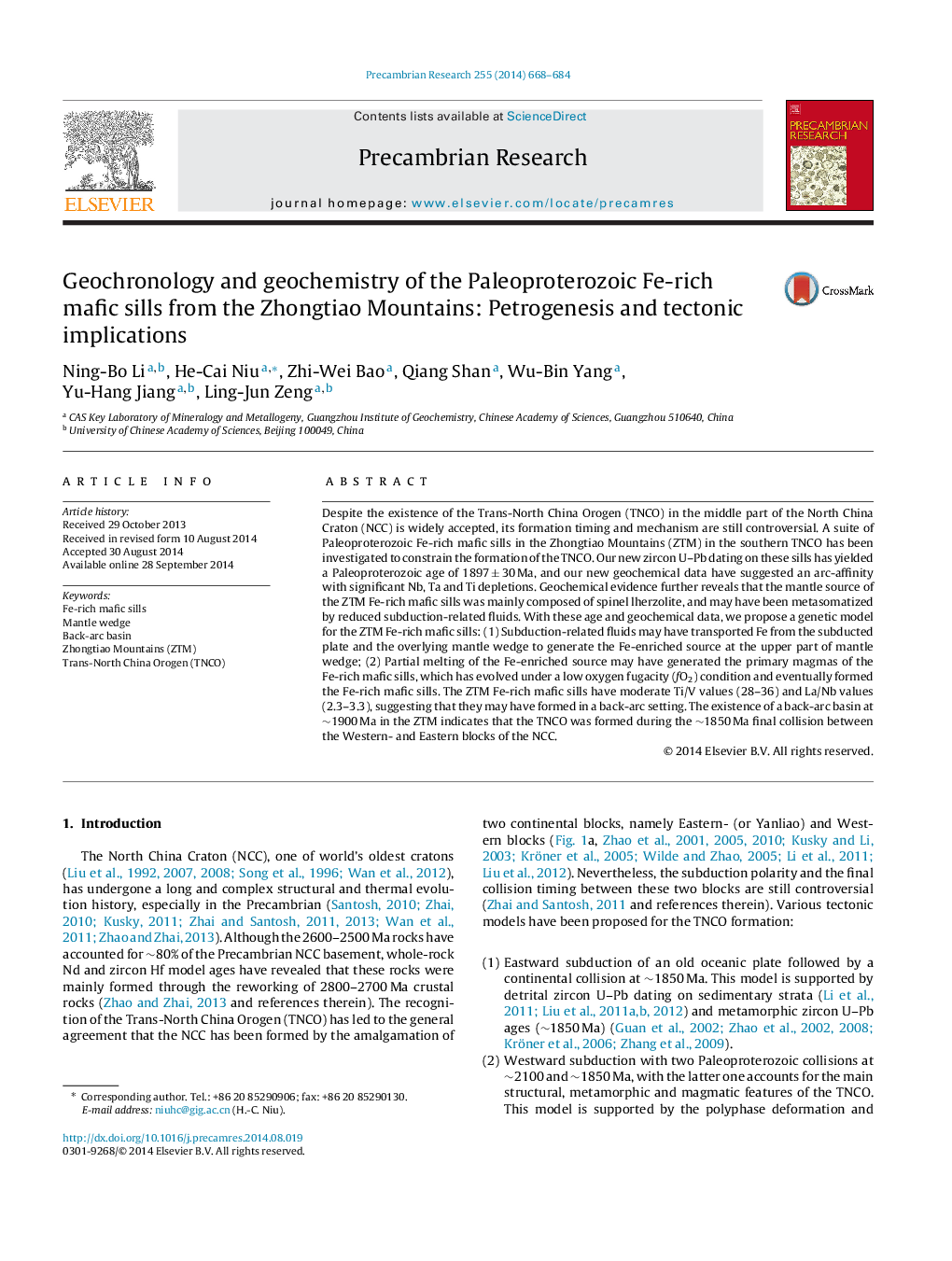| کد مقاله | کد نشریه | سال انتشار | مقاله انگلیسی | نسخه تمام متن |
|---|---|---|---|---|
| 4722759 | 1355487 | 2014 | 17 صفحه PDF | دانلود رایگان |

• Fe-rich mafic sills in the Zhongtiao Mountains were emplaced at ∼1900 Ma.
• The Fe-rich mafic sills were derived from an enriched mantle source.
• The Fe-rich mafic sills were generated in a back-arc basin.
Despite the existence of the Trans-North China Orogen (TNCO) in the middle part of the North China Craton (NCC) is widely accepted, its formation timing and mechanism are still controversial. A suite of Paleoproterozoic Fe-rich mafic sills in the Zhongtiao Mountains (ZTM) in the southern TNCO has been investigated to constrain the formation of the TNCO. Our new zircon U–Pb dating on these sills has yielded a Paleoproterozoic age of 1897 ± 30 Ma, and our new geochemical data have suggested an arc-affinity with significant Nb, Ta and Ti depletions. Geochemical evidence further reveals that the mantle source of the ZTM Fe-rich mafic sills was mainly composed of spinel lherzolite, and may have been metasomatized by reduced subduction-related fluids. With these age and geochemical data, we propose a genetic model for the ZTM Fe-rich mafic sills: (1) Subduction-related fluids may have transported Fe from the subducted plate and the overlying mantle wedge to generate the Fe-enriched source at the upper part of mantle wedge; (2) Partial melting of the Fe-enriched source may have generated the primary magmas of the Fe-rich mafic sills, which has evolved under a low oxygen fugacity (fO2) condition and eventually formed the Fe-rich mafic sills. The ZTM Fe-rich mafic sills have moderate Ti/V values (28–36) and La/Nb values (2.3–3.3), suggesting that they may have formed in a back-arc setting. The existence of a back-arc basin at ∼1900 Ma in the ZTM indicates that the TNCO was formed during the ∼1850 Ma final collision between the Western- and Eastern blocks of the NCC.
Journal: Precambrian Research - Volume 255, Part 2, December 2014, Pages 668–684